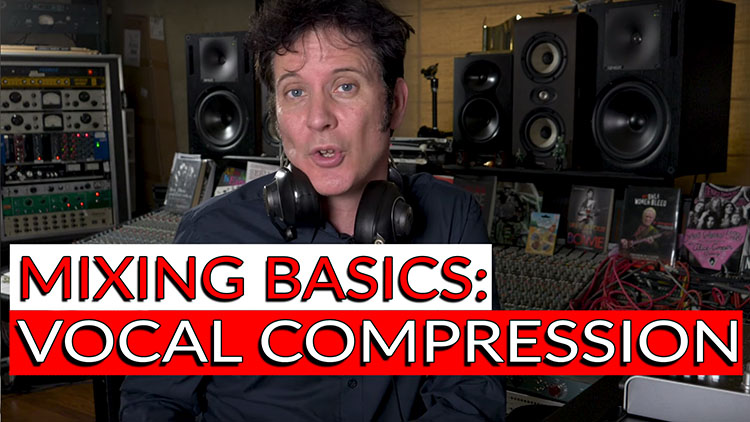Today, we will be going over the basics of mixing vocals.
Earlier, we balanced the mix using just panning and volume and got the mix to a place where we could start making better decisions. In this video, we are going to look at some really subtle ways you can make your vocals sit better in the mix using just compression and automation. In Pro Tools, this automation could be “clip automation”, but it could also be “volume automation” in your DAW.
There are a lot of people in the industry who will advocate for serial compression and use tons of compression. This was especially true when people were mixing only on consoles. This is because it was very difficult to achieve the kind of detail we are applying today with a console.
Most people will use compression to color the sound, and to make sure it is always in the front of the mix. There are three ways you can do this: using compression or serial compression, clip gain/volume automation, or using a limiter, which can help bring out the personality in the track as well. Be careful when you are using clip gain or volume automation, as you want to make sure you are not exaggerating things that you will have to edit out later!
READ ALSO: 6 Best Practice Amps in 2022
READ ALSO: 7 Best Reamp Boxes in 2022
READ ALSO: How Much Does Spotify Pay Per Stream in 2022
With all of these strategies, though, you have to be careful and sue your ears at all times to make sure the vocal does not begin to sound choked. Compressors have this ugly habit of choking out the sound when they get too aggressive and it can remove the personality of the vocal. This makes it sounds squashed and far too compressed!
A lot of this can sound really subtle when you are first starting out, so it can be a bit confusing. But ultimately, you are listening to the vocal to make sure it feels like it is always present in the mix.
It is also important to remember that when you are working on a song, whatever you do to one instrument, you have to start doing to everything else. What do I mean by that exactly? This means that if I make my drums sound massive and aggressive, everything else is going to feel tiny against it, suddenly my bass has to be massive and aggressive and maybe I have to add a ton of distortion to help it glue together with those drums, and the same thing with the guitars, and so on. If this massive sound is your end goal, then this is not a problem! However, with a more acoustic track, like the one we are working on in the video, we have to be careful because we want everything to still feel balanced.
READ ALSO: Best Acoustic Foam Panels for Home Studios
READ ALSO: Alesis 3630 Review
READ ALSO: Fletcher-Munson Curve Explained
So, it is very important in mixing to think this way: What is my end goal?
What we did with this track was pretty basic, but you can see that the vocals now sit so much better in the mix. At this point, we are not reaching for EQs and all kinds of crazy stuff; we are just keeping this very simplistic so we are able to make better decisions as we continue on in our mixing process!
